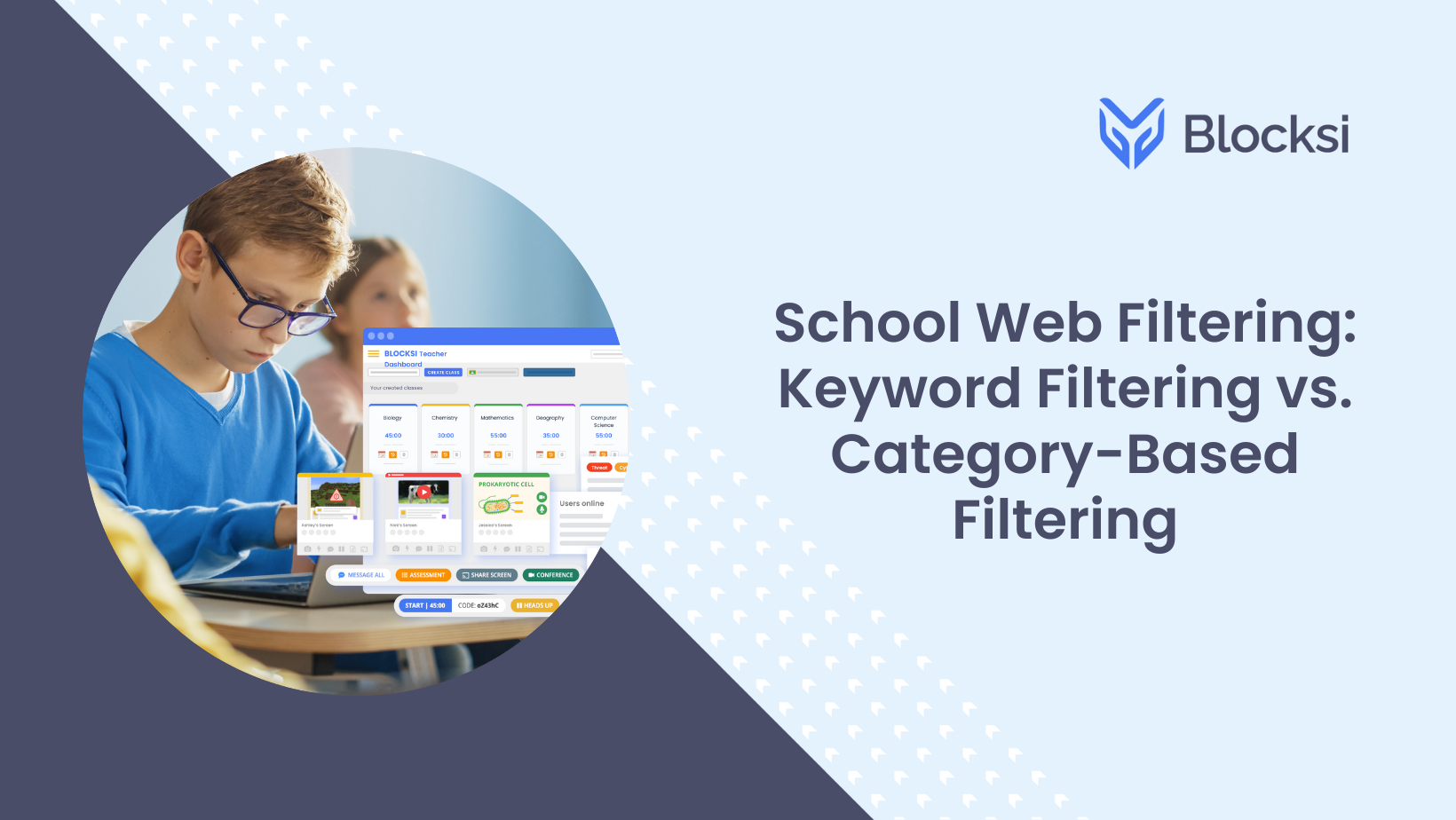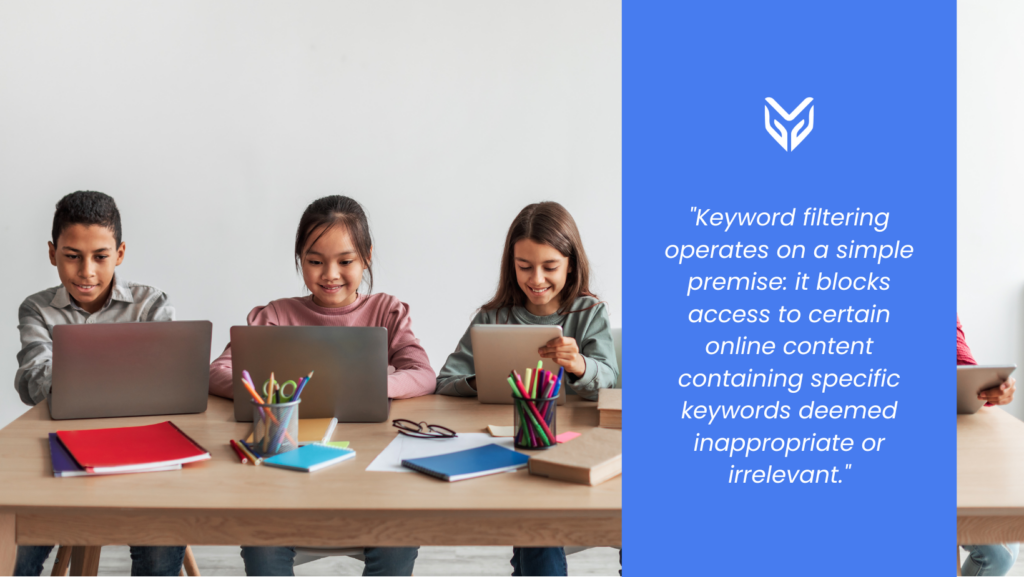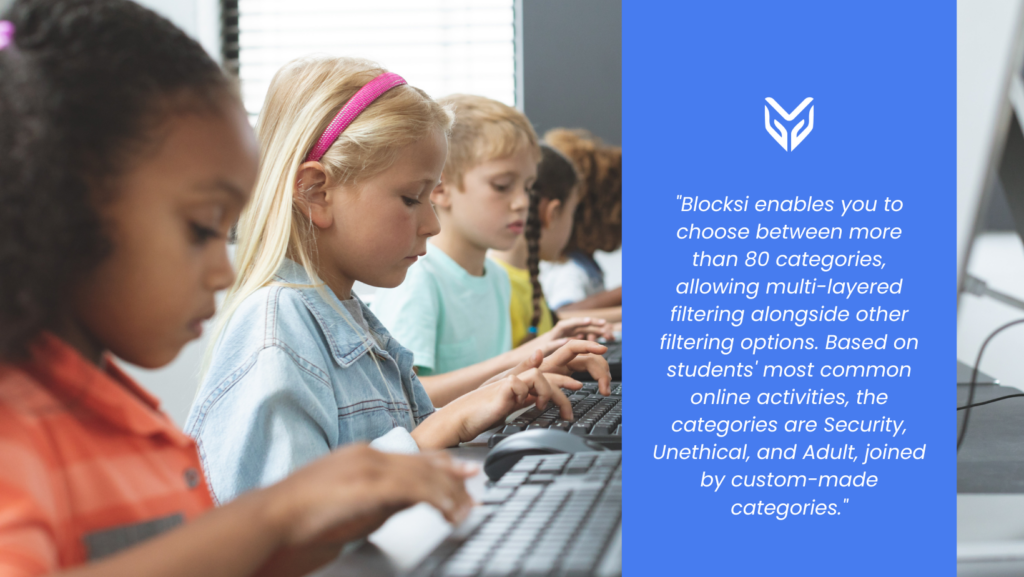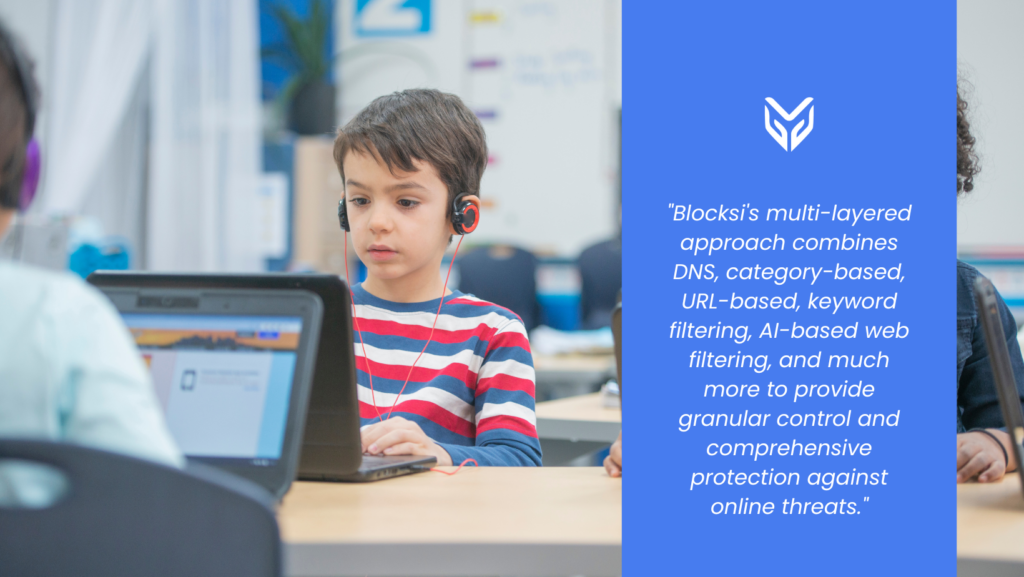NEWS
School Web Filtering: Keyword Filtering vs. Category-Based Filtering

In school web filtering, there’s a constant need to balance safety, educational focus, and freedom. As educators, admins, and tech directors, it falls on our shoulders to navigate the sea of options available to us and ensure that our K-12 students are both protected and empowered in their online experiences.
When it comes to content filtering, two primary methods stand out: keyword filtering and category-based filtering. Each has its own strengths and weaknesses, and understanding the differences between them is crucial in selecting the right solution for your school.
Understanding Keyword Filtering
Keyword filtering operates on a simple premise: it blocks access to certain online content containing specific keywords deemed inappropriate or irrelevant. For instance, if a school wants to restrict access to inappropriate content, they might input keywords like “drugs,” “suicide,” or “porn” into their filtering system.

One of the main advantages of keyword filtering is its specificity. Schools can tailor their filters to match their unique needs and concerns. This level of control can be invaluable in maintaining a focused learning environment and protecting students from harmful or distracting material.
However, keyword filtering also has its limitations. It relies heavily on predefined keywords, meaning new or obscure content may easily slip through the cracks. Additionally, it can be challenging to account for context, leading to overblocking or underblocking in certain situations.
Exploring Category-Based Filtering
Category-based filtering takes a broader approach to content management by categorizing websites into predefined groups based on their content or purpose. Instead of targeting specific keywords, this method blocks entire categories of websites deemed inappropriate or non-educational.
One of the key benefits of category-based filtering is enforcing policies and restrictions on thousands of devices in seconds. For example, Blocksi enables you to choose between more than 80 categories, allowing multi-layered filtering alongside other filtering options.
Based on students’ most common online activities, the categories are Security, Unethical, and Adult, joined by custom-made categories. Some of these also contain content from social media platforms and similar platforms commonly used by K-12 students. This streamlined approach can save time and resources while still effectively managing and filtering online activity.

Moreover, category-based filtering often leverages continuously updated databases and machine learning algorithms to stay ahead of emerging threats and trends. This dynamic nature ensures schools remain protected against evolving online risks without constant manual intervention.
Choose Content Filtering Perfect for Your School: This Is How to Do It
There is no one-size-fits-all solution when selecting a web filter for schools. Instead, it’s essential to consider your educational institution’s unique needs and priorities.
For some schools, the granular control offered by keyword filtering may be paramount, allowing them to fine-tune their filters to match specific curriculum requirements or safety concerns. Others may prefer the simplicity and scalability of category-based filtering, trusting in its ability to adapt to changing online landscapes.
But What Is Ultimately the Best Pick?
When it comes to safe and focused learning, there are no shortcuts. Thus, the ideal solution is to combine multiple approaches. Blocksi’s multi-layered school web filtering system offers this flexibility. It allows schools to enjoy the benefits of keyword filtering, category-based filtering, and other advanced features, all in a single comprehensive package that can adapt to the ever-changing online landscape.
Blocksi’s multi-layered approach combines DNS, category-based, URL-based, keyword filtering, AI-based web filtering, and much more to provide granular control and comprehensive protection against online threats. The thorough filtering software offers cloud-based filtering solutions with unlimited bandwidth, seamless integration, and robust 99.99% service uptime.

Moreover, Blocksi goes beyond offering traditional school support by offering not only K-12 web filtering but also classroom screen monitoring and double K-12 threat protection, both of which are also backed by AI. With precise filtering policies, threat detection, and human reviewing, schools can ensure a safe and focused learning environment both during and after school hours.
In conclusion, the choice of school web filtering ultimately depends on each school’s unique needs and priorities. If you are interested in finding out more about confidently navigating the landscape of safe internet usage for students, reach out to us and skyrocket your students’ safety and success today.
SOURCES
[1] 15 Tips for Creating a Safe Learning Environment
[2] 7 TIPS TO AUTOMATE YOUR CLASSROOM WITH AI





